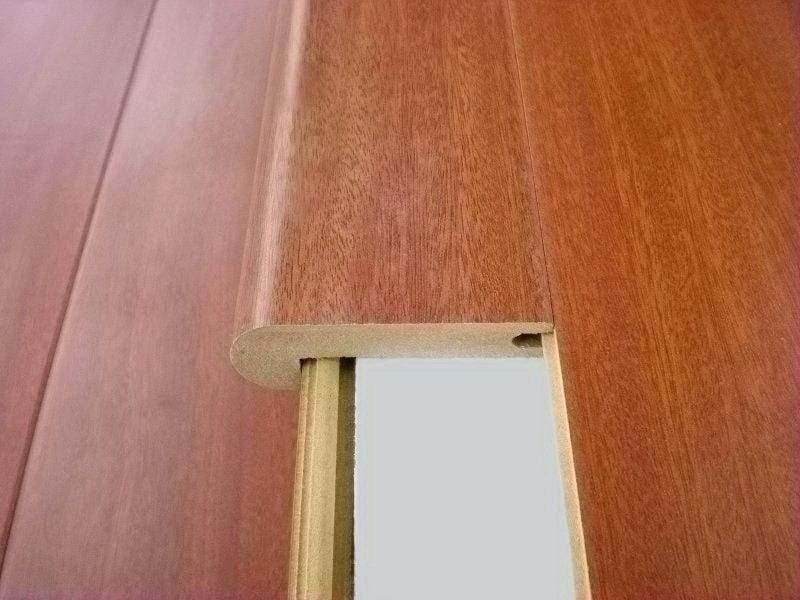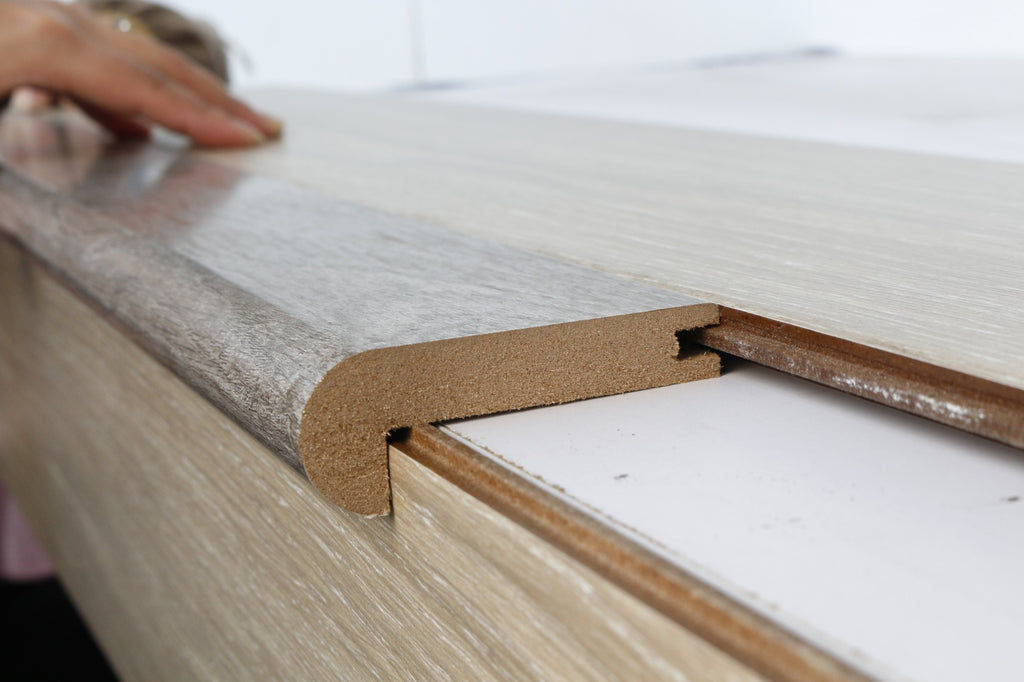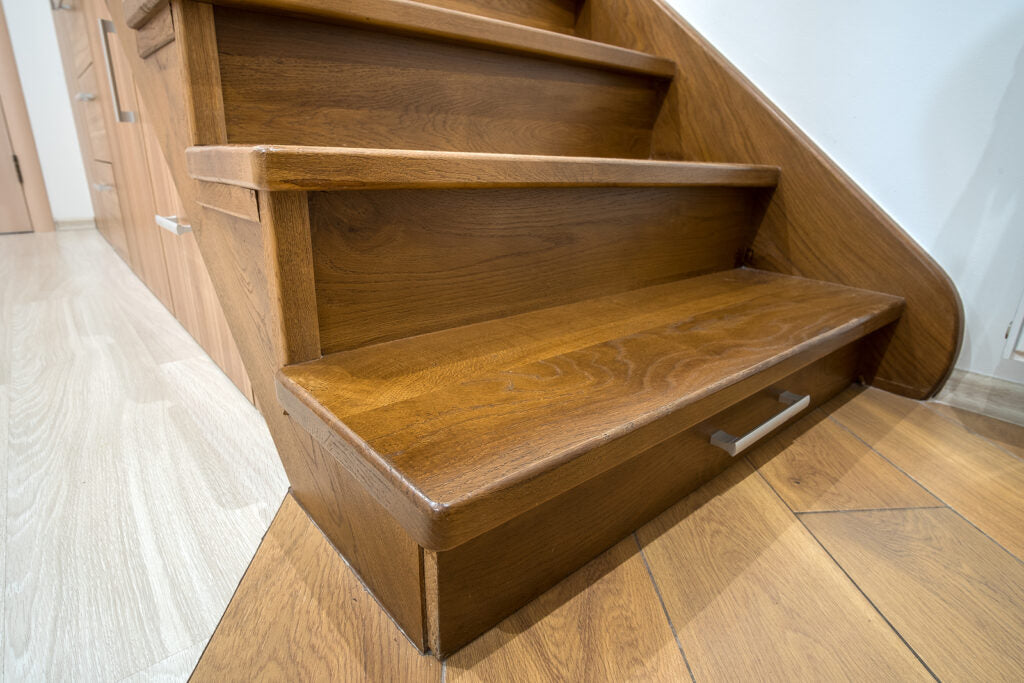Stair nosing is an essential part of any flooring project that involves stairs. Not only do they provide a finished look to your stairs, but they also offer a practical solution for ensuring safety in your home. With a wide variety of options available on the market, choosing the right stair nosing for your home can be a daunting task. In this article, we will explore the importance of stair nosing for floors, why they make a home look beautiful, how they are installed, and other relevant information for homeowners who are buying flooring and have stairs.
What is Stair Nosing?

Stair nosing is a moulding that is installed on the edge of stairs where the riser and the tread meet. The primary function of stair nosing is to protect the edges of stairs from wear and tear, as well as provide slip-resistant properties to reduce the risk of accidents. They also help to define the edge of each step, making it easier to see and navigate.
Why Do You Need Stair Nosing For Your Floor?
Stair nosing serves several important purposes in any home with stairs. Firstly, they help to reduce the risk of accidents by providing slip-resistant properties to the edge of each step. This is especially important in homes with children, elderly people, or pets, where the risk of slips and falls is higher. Secondly, they protect the edges of stairs from wear and tear, extending the lifespan of your flooring and keeping your stairs looking new for longer. Lastly, they provide a finished look to your stairs, adding an aesthetic touch to your home.
Why Stair Nosing Makes Your Home Look Beautiful?

Stair nosing comes in a variety of colours and finishes, allowing you to choose a style that complements your flooring and overall decor. They can be made from a range of materials, including wood, metal, and laminate, offering a range of styles to choose from. Whether you prefer a traditional look or a modern aesthetic, there is a stair nosing option that will work for you.
How to Install Stair Nosing On Floors?
Installing stair nosing is a relatively simple process that can be done by most homeowners with basic DIY skills. The first step is to measure the width and length of your stairs to determine how much stair nosing you will need. You will also need to choose the type of stair nosing that is suitable for your flooring material.
Once you have your stair nosing, the next step is to prepare the stairs for installation. This involves removing any existing moulding or trim from the edges of the stairs and cleaning the surface thoroughly. You may also need to sand down any rough edges to ensure a smooth finish.
After the stairs are prepared, it's time to install the stair nosing. This involves applying adhesive to the back of the moulding and pressing it firmly onto the edge of the step. Some stair nosing options may require additional screws or nails to secure it in place. Once the stair nosing is installed, you can finish it off with caulking or trim to ensure a seamless finish.
Tips When Installing A Stair Nosing For Floors

Installing stair nosing on the flooring may seem like a daunting task, but with the right tools and knowledge, it can be done quickly and efficiently. Here are five tips to know when installing stair nosing:
- Choose the Right Nosing: The first step in installing stair nosing is to choose the right type of nosing for your stairs. Consider the material of your flooring and the amount of traffic your stairs receive. Some types of nosing may be more durable and offer better slip resistance, making them a better choice for high-traffic areas.
- Measure Accurately: To ensure a perfect fit, it's essential to measure your stairs accurately. Measure the width and length of each step and add an extra inch or two to allow for trimming and cutting. It's always better to have too much than too little, as you can always trim off the excess.
- Prepare the Surface: Before installing the nosing, make sure the surface is clean, dry, and free of any debris or adhesive residue. You may need to sand down any rough or uneven areas to ensure a smooth finish. If you're installing nosing on a carpeted staircase, make sure to remove any carpeting or padding from the edges of the stairs.
- Use the Right Adhesive: Choose a high-quality adhesive that is suitable for your nosing material and your flooring. Make sure to follow the manufacturer's instructions carefully when applying the adhesive. If you're not sure which adhesive to use, consult a professional or a flooring specialist.
- Finishing Touches: Once the nosing is installed, add the finishing touches to ensure a seamless finish. Use caulking or trim to cover any gaps or spaces between the nosing and the stairs. If you're installing wooden nosing, you may need to sand it down or apply a finish to match the rest of your flooring.
By following these 5 tips, you can ensure a smooth and successful installation of stair nosing that will not only improve the safety of your stairs but also enhance the overall appearance of your home.
Curved Stairs only for the Advanced
When installing stair nosing on curved stairs, it's important to take your time and make precise cuts. Curved stairs require more intricate cuts, and it's important to ensure that the stair nosing fits snugly against the curve of the step. Using a jigsaw or coping saw can help you achieve more precise cuts. This is not easy! Professionals are best to be considered for curved or unique stair designs.
Take safety precautions when installing stair nosing. Wear safety goggles and gloves, and make sure to use caution when handling power tools. If you're unsure about any aspect of the installation process, it's always best to consult with a professional.
Other Relevant Information About Stair Nosing For Homeowners

When choosing stair nosing for your home, there are a few important factors to consider. Firstly, you will need to ensure that the stair nosing is compatible with your flooring material. This will ensure that it is durable and will not damage your flooring in any way. Secondly, you will need to choose a stair nosing that is suitable for the amount of foot traffic your stairs receive. If your stairs see heavy use, you may want to choose a more durable option that can withstand wear and tear.
Installing stair nosing is a relatively simple process that can be done by most homeowners with medium-level DIY skills. By choosing the right type of nosing, measuring accurately, preparing the surface, using the right adhesive, and adding finishing touches, you can ensure a successful installation that will improve the safety and appearance of your stairs.
Remember to consider important factors such as compatibility with your flooring material and durability when choosing stair nosing for your home. Whether you prefer a traditional or modern look, there is a stair nosing option that will work for you. By taking the time to choose the right stair nosing and installing it properly, you can enjoy a safer and more beautiful home for years to come.
In conclusion, the stair nosing is an important part of any flooring project that involves stairs. They offer practical benefits such as slip resistance and protection from wear and tear, as well as adding an aesthetic touch to your home. When choosing stair nosing for your home, consider choosing stair nosing for your home involves considering both protection for the edges of stairs and adding an aesthetic touch to your space.
Other flooring blog articles you may want to read:
The Complete Guide To The Best Flooring For Your Home
Flooring Transitioning Products For Your Home: What Are These?
